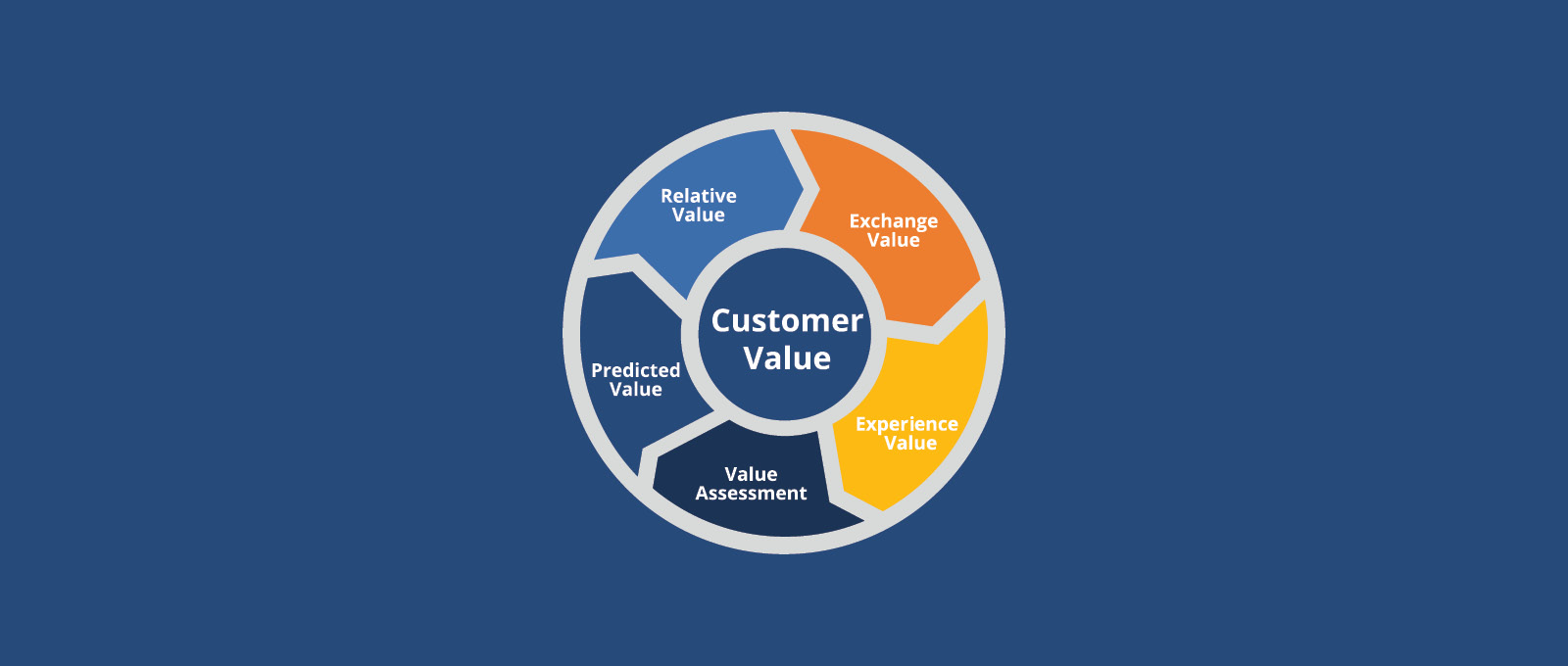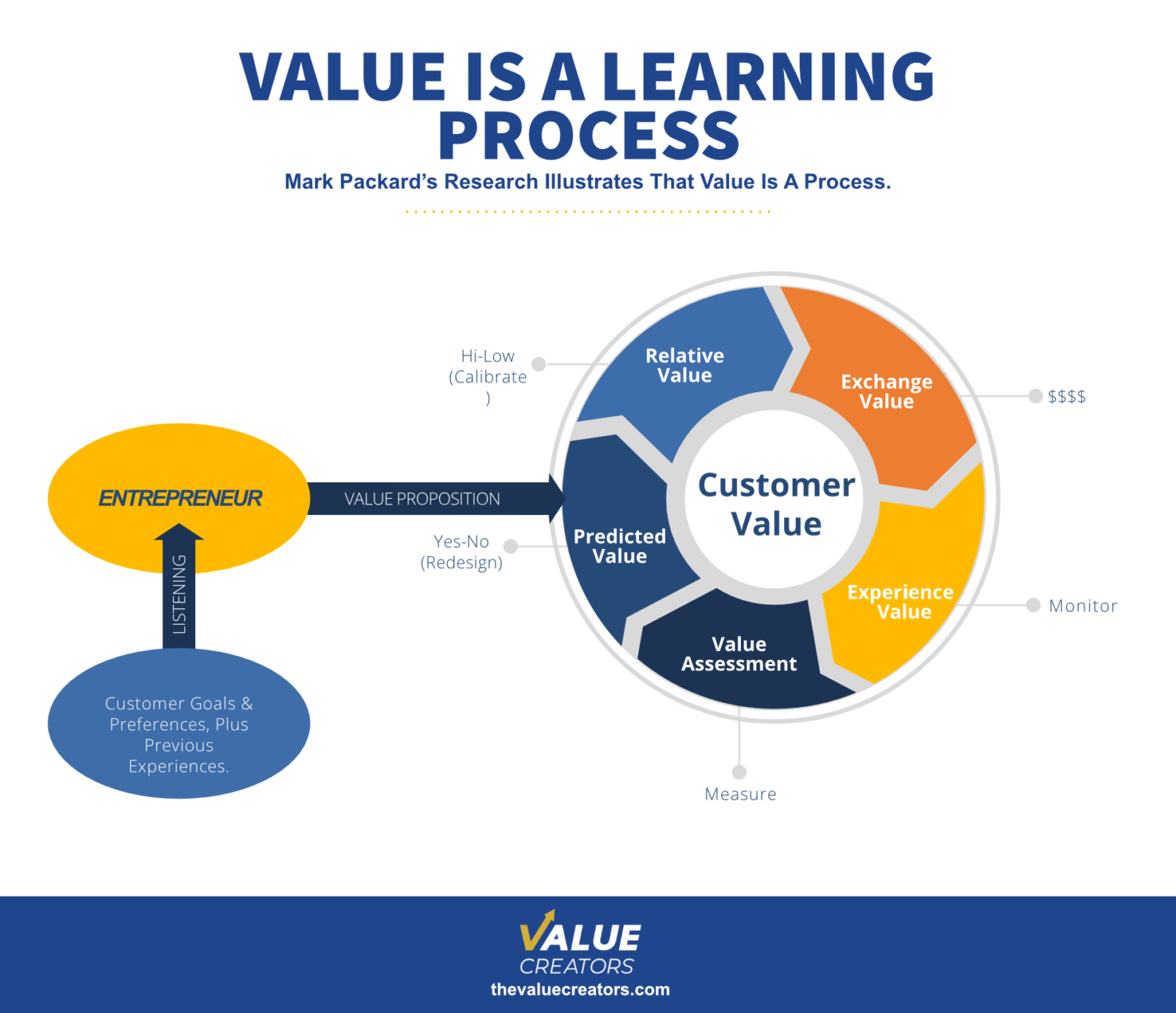44. Mark Packard on The Value Learning Process
Entrepreneurs are redrawing the Customer Journey Map. Based on the latest knowledge from both economics and neuroscience, Dr. Mark Packard explains the five stages of the Value Learning Process on today’s episode.
Key Takeaways and Actionable Insights
To be able to adopt new ideas and successfully apply new techniques, it is sometimes necessary to discard old ones that are barriers to clear thinking. The theory and vocabulary of value illustrate one such barrier.
The language of business schools and many business books is that firms and entrepreneurs create value. That terminology implies that value is somehow embedded in the product or service the firm designs and markets, and that value is formed in the firm’s domain.
The business world has made a little progress in the last few years by opening up to the idea that value is somehow co-created by the provider and the customer. In co-creation, customers’ own usage of the service causes the value to be realized, and their comments, criticisms and suggestions become useful feedback to the provider to further improve the offering.
But we have known since 1871 that value actually lies entirely in the customer’s domain. Carl Menger wrote:
“Value is a judgment economizing men make about the importance of the goods at their disposal for the maintenance of their lives and well-being. Hence value does not exist outside the consciousness of men.”
Now, Mark Packard sheds more light on exactly how value forms and develops “in the consciousness of men” – or, as we would say today, in the customer’s experience.
Mark introduces the concept of value learning. This is the mental process through which the customer advances in response to a value proposition from an entrepreneur or a brand. It’s important for entrepreneurs to understand, monitor and measure the customer’s value learning. There are five stages, illustrated by our Knowledge Map Graphic below.
Predicted Value
Customers evaluate an offering that’s available to them with a mental prediction: I think that this offering might be valuable to me (i.e. make me feel I am improving my circumstances / make me feel better / help me towards my goal). Predictive value is translated into a price one is willing to pay for that experience. This willingness to pay is then compared to the price of the product. It’s a yes or a no.
Entrepreneurial action: Manage predictions strategically. Persuade customers that the predicted value is worth the cost, but don’t overhype your product. Identify those customers whose predicted value relative to your price is positive. These are your only current target (unless or until you redesign your value proposition).
Relative Value
The customer’s next cognitive action is to identify whether the predicted value is high or low relative to alternatives. These alternatives include not just other products in your industry (if any), but all other ways your customer might also satisfy the need that your product addresses. For example, one alternative is to keep their dollars in their wallet, if they think they can satisfy their own need for themselves at a lower cost (all in). The predicted value of your offering must be greater than all alternatives in their perception.
Entrepreneurial action: Calibrate your offering to the customer’s relative value calculation using price, features and benefits.
Exchange Value
If the customer’s Relative Value perception is sufficiently positive, they’ll exchange dollars with you. But remember to account for the customer’s uncertainty. If the relative value is comparable between alternatives, customers will generally prefer the more familiar (certain) value over your uncertain offering.
Entrepreneurial action: Use price discovery techniques to align price and relative value.
Value Experience
The customer uses or consumes the product or service. They’re generating feelings and perceptions as they do so, either positive or negative. Many of these are in response to a mental comparison with Predicted Value – is the experience better or worse than predicted?
Entrepreneurial action: Monitor the customer’s perceived experience. Be aware of variables in circumstances (time, place, mood, competitive environment) that can change their perceptions. You may need to guide the customer’s first consumption experience(s) to ensure proper use and optimal experience.
Value Assessment
The customer, either concurrently or subsequently, makes a mental value assessment based on their experience. Good or bad? Better or worse than predicted? Does my assessment result in predicted value for a repeat purchase or subscription?
Entrepreneurial action: Measure. This is the stage where measurement becomes useful. Find a measurement that works for you. It could be in sales dollars, purchase volume trends, or customer satisfaction metrics. Such metrics are mere approximations, however, and are neither precise nor set in stone. Be careful how you interpret measured results.
This value learning process is mutual. The customer is always evaluating and re-evaluating and the entrepreneur must keep pace in service, relationship management and innovation. It’s a never-ending cycle of value.
In future podcast episodes, Mark will share some of the new tools he has developed to help entrepreneurs master the cycle. Follow Mark on Twitter to keep updated between now and then!
SUBSCRIBE
Apple Podcasts, Google Play, Stitcher, Spotify
DOWNLOADS & EXTRAS
Understanding The Mind of The Customer: Our Free E-Book









Leave a Reply
Want to join the discussion?Feel free to contribute!